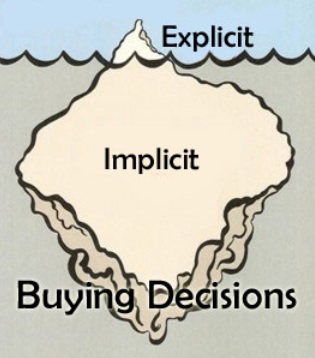Making the innovation consulting sale not only means getting the facts right. At a deeper level, closing the sales requires to capture implicit buying signals. That’s critical to know how to sell innovation consulting.
I/ Innovation listening means listening to implicit buying signals, such as the energy in the voice, body language and facial expressions
So, a sales executive has to deciphering how that person sitting right in front of him will make the decision of hiring him as an innovation consultant.

This involves listening to the facts, but it also involves listening to less explicit signals, such as :
- the energy in the client’s voice: when the tone is strong and when it’s less so, when the client emphasizes one word rather than another.
- body language: the key here is not only understanding what the body language means as such but also how this applies to making a decision to buy something.
For example, people often say that when somebody touches his ear, there’s discomfort. When people puts one’s hand in front of one’s mouth, there’s inhibition or at least a reticence to express something verbally.

Plus, it’s very important to be able to qualify the emotions arising on the client’s face, whether it’s pride, stress, excitement, drive, confidence, guilt, or any other feelings. What counts is to spot the very different feelings that the client is feelings when he’s feeling them. And this can be done by:
- looking at how the client’s body language
- the tone of voice
- facial expressions
II/ The innovation listener must understand what elicits feelings of fear
Based on the client’s facial expression, tone of voice and body language, the innovation listener should be able to answer the following questions:
- When did my client feel fear? Why was he fearful? What made him fearful? How did he express or manifest his fear: was it through words, the tone of voice, body language, or facial expressions?
- When the when did the client feel desire and opportunity? Why did he feel desire and opportunity? How are these feelings related to his career prospects and the company overall interest?
For every single answer to each of these questions, the innovation listener needs to ground his answers on real facts, whether they are specific words, very specific facial expressions, a change in the tone of voice, or body language.
III/ How to sell innovation consulting?
The innovation listener must use this information to build a value proposition. When the innovation listener is able to provide specific answers to each of these questions, he develops an understanding of what the critical drivers to making a decision are. Then, he can build his value proposition based on his understanding of why, and how, his client will feel feelings of fear and feelings of desire and opportunity. More specifically, he should show that:
- First of all, there are real reasons to feel fear in his value proposition
- Second of all, introduce solutions that bring a sense of desire for working with him, as well as a sense of opportunity to advance the client’s career
In a forthcoming article, I’ll show how collected information is used to understand how the client thinks.
Further readings on how to sell innovation consulting.
- For a presentation of Daniel Kahneman’s ideas on the theory of decision-making, please refer to this article.
- For a discussion of why fear plays a critical role in reaching a decision, please refer to Clayton Christensen’s The Innovator’s Solution, chapter 1
No comment